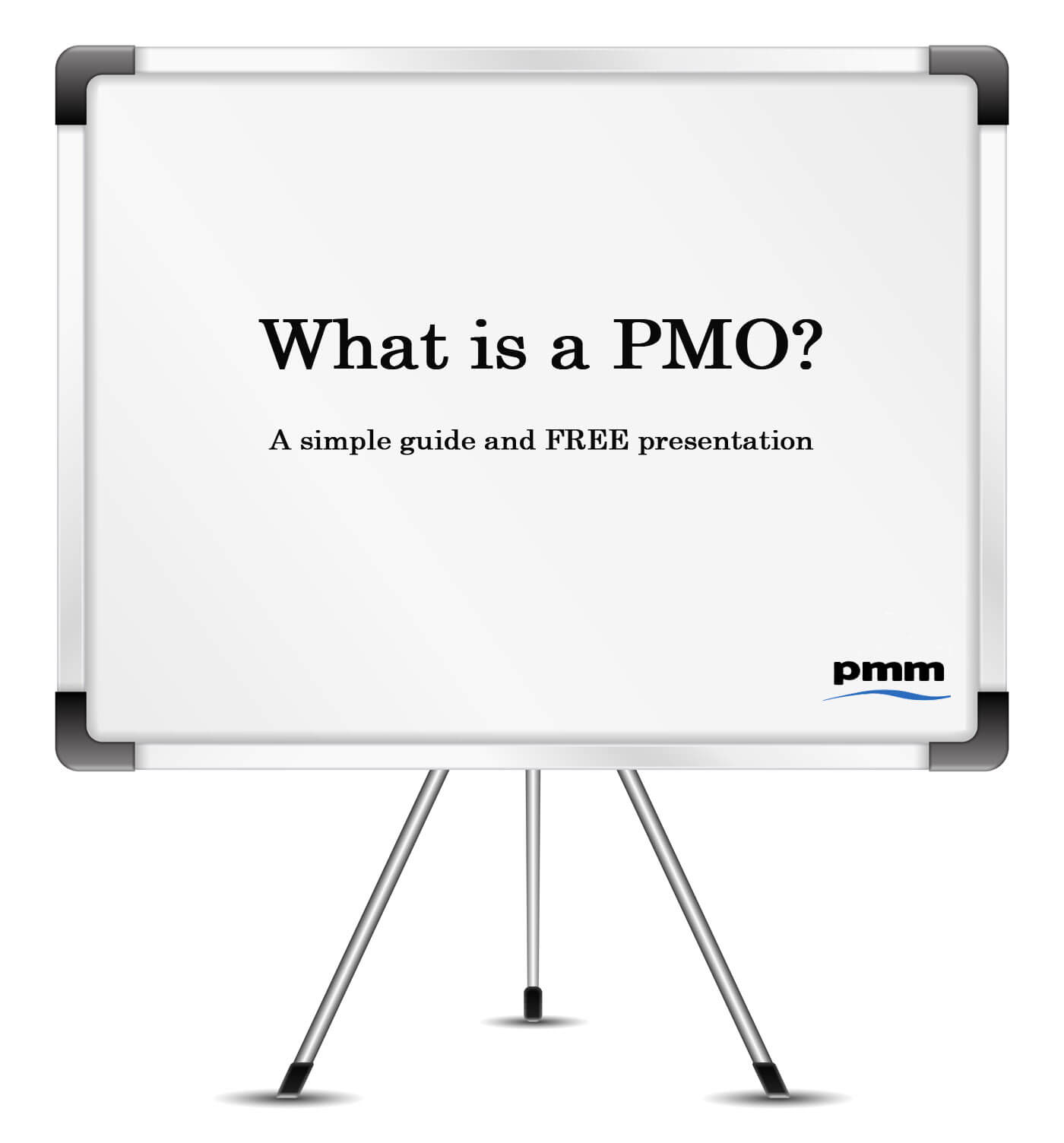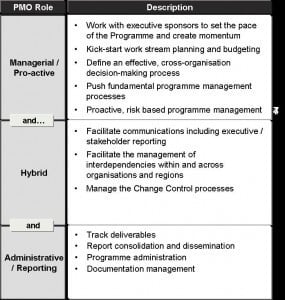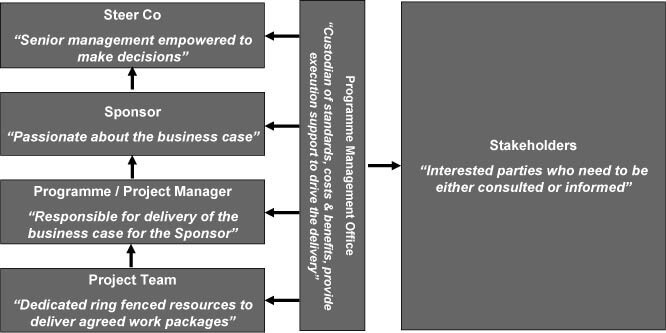A very popular question is, “What is a PMO – a project management office?”. The reason for this is, despite the growing popularity over the last 10 to 15 years, there are still many in project and senior management who do not understand what they are or the benefits they provide.
Due to this, it is important to understand what is meant by a PMO, especially if you work or manage a PMO. This will ensure that a concise answer can be provided.
PMO Definition
Unlike questions like “what is 2 + 2?”, there is no right or wrong answer to what is a PMO. You will find many good books, articles, etc that provide their definition of a PMO.
The Project Management Institute (PMI) provide the following definition in the Project Management Body of Knowledge (2003) PMI.
“An organizational body or entity assigned various responsibilities related to the centralized and coordinated management of those projects under it’s domain. The responsibilities of the PMO can range from providing project management support functions to actually being responsible for the direct management of a project”
Wikipedia lists the following as the definition:
“A Project Management Office (PMO) is a group or department within a business, agency or enterprise that defines and maintains standards for project management within the organization. The PMO strives to standardize and introduce economies of repetition in the execution of projects. The PMO is the source of documentation, guidance and metrics on the practice of project management and execution.”
As you can see, both are similar definitions but not quite the same. A good summary is:
“The PMO is a function that is given the responsibility to deliver the projects within it’s scope to a single defined set of standards so as to provide management with a greater visibility of project performance and to increase the probability of success through standardisation and good practice.”
PMO Objectives
There are many objectives of a PMO, many will depend on the objectives / strategy of the organisation. However, my view is that there is an important purpose of all PMO’s – very simple,
“to provide a framework that will support all stakeholders and project teams to improve the probability of successful delivery.”
An organisation embarks on a project to achieve an outcome. This involves the investment of valuable resources (people, money, time). If the PMO does not improve the probability of successfully project delivery it is not doing it’s job and is not needed.
Types of PMO
As there is no one single definition, there is not just one type of PMO. The structure, scope and set-up of a PMO will vary from organisation to organisation. However, the PMO can be classified as one of the following:
Administrative / Reporting PMO
This is the basis, starting position for most PMO’s. The main focus is on the capture of project reports from the different project teams and consolidation into standard reports for senior management. It is rare for anything but the basic level of review of data i.e. missing items, incorrect dates, etc.
This type of PMO is often seen as adding little value. This results in it being staffed with junior / inexperienced resources. This only serves to reinforce the view that the PMO adds little value and is only a report clearing house.
Pro-active / Managerial PMO
This is at the other end of the spectrum to the Reporting PMO. This type of PMO is typically staffed by experienced delivery professionals with many years spent working as a project / programme manager. This type of PMO will often own the project and programme managers, allocating them to the projects that are aligned to the strategy.
Due to the set-up and strengths of this type of PMO, they are perceived to deliver high value. Unfortunately this type of PMO is still not that common.
Hybrid PMO
As the name implies, this type of PMO sits between the Reporting and Managerial PMO’s. As a PMO matures, gains exposure, support and is seen to deliver value, it will naturally take-on / be asked to provide more services. More and more PMO’s now full into this category, which is good news for those choosing a career path within the PMO.
PMO Maturity
It should be noted that most PMO’s will start as a Reporting PMO, especially in organisations who have never had a PMO. The good news is that this does not limit how a PMO can mature and grow. As a PMO professional you should strive, want to grow the value that is delivered by your PMO. This is achieved by adding more and more services all aligned with the objective of improving the probability of successful outcomes for projects.
The diagram below illustrates the typical services associated with the different types of PMO. If an arrow was added to show maturity it would start at the bottom and point upwards. Use this diagram as a reference for mapping out your PMO roadmap and a way to open the minds of senior management on what can be achieved.
PMO Maturity Diagram
PMO Engagement Model
The PMO will engage with many different stakeholders. If set-up correctly, the PMO will be the ‘glue’ between all of the stakeholders.
The diagram below shows how the PMO sits in the middle of all of the stakeholders providing transparency, visibility, communicating and keeping all of the participant’s aligned.
Read Project Roles and Responsibilities for more information.
The exact model will depend on organisation, objectives, type of PMO. However, this does demonstrate an important principle that the PMO should be very much in the middle of change delivery not a function out to the side.
PMO Structure
In these days of globalisation and advances in technology, many teams now work in a diverse and virtual environment. This all is having an increasing impact on the structure of PMO’s. As long as the PMO can function and successful fulfil duties, this should not be an issue.
However, when considering shape and structure, the following should be kept in mind:
- Managerial – tend to be centralised with resources co-located working in PMO structure
- Administrative – tend to be dispersed with small central PMO linking into project PMO’s
- Hybrid – will be structured in-between
Summary
What is a PMO?
- Organisation responsible for overseeing delivery
- Defines and implements standard tools and processes
- Improves the probability of successful delivery
- 3 types of PMO – Reporting / Hybrid / Managerial
- PMO is the ‘glue’ between stakeholders
- Structure – centralised / dispersed
Designed and implemented correctly, the PMO can deliver enormous benefit to an organisation.








